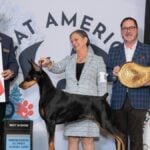


Home » The Lakeland Terrier
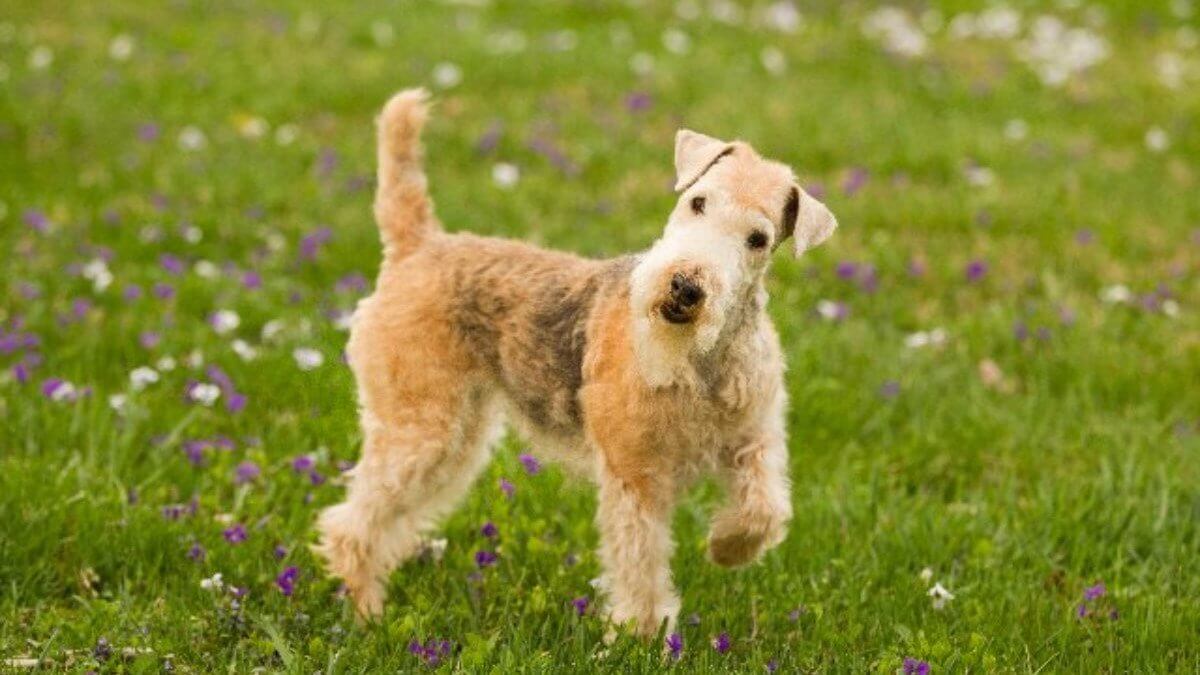
This article was originally published in Showsight Magazine, November 2013 issue.
It’s not just form that follows function in an animal; character, too, is shaped in the crucible that forms a working or sporting breed of dog. The Lakeland Terrier is much more than one of an array of long-legged wire-coated terrier breeds exhibited in the Terrier Group at shows around the globe. The fascination for those of us devoted to the breed is much more about what is going on in his devious mind than about his smart good looks. Consideration of the breed’s history and development explains their make and shape but also illuminates the virtues and foibles of Lakeland Terrier personality.
Lake District farmers raised sheep. Foxes came down from the hills surrounding the farmland preying on the spring lambs to feed their kits. Out of sheer economic necessity, groups of farmers sought to control the fox population. Doing so entailed long treks on foot for dog and man up into the mountainous terrain where the foxes had their dens. Hounds were used to follow the trail, but terriers were required to extract or kill the fox. A terrier up on leg was necessary because the foxes sought out ledges and crevasses. The form of a successful terrier had to balance a fine line between being narrow enough to enter the rocky dens and possessing jaws and body of sufficient strength to engage the fox. For Lake District farmers, this was not sport but pest control. These were not dogs carried in saddlebags and used to merely bolt the fox so the hounds could have another run. More often than not the terrier had to kill the fox underground. Foxes in the fells might weigh upwards of 20 pounds; killing one unaided was quite a feat. At the end of the day, the terriers had to travel miles back home.
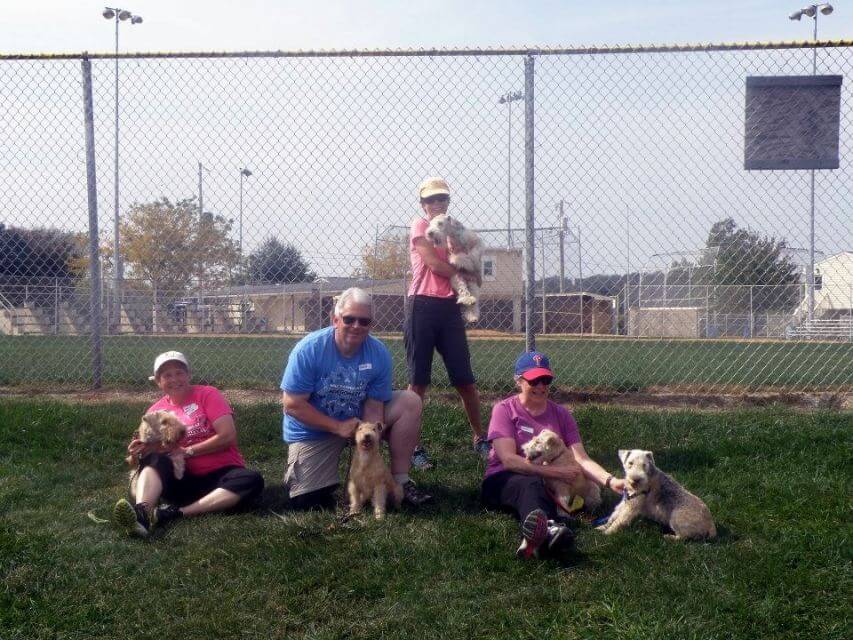
It has been said that the real test of the terriers was the trip back down out of the mountains in the miserable weather typical of the area. During the development of the breed, there was only one overriding principle: get ’er done! It mattered little what the dogs looked like or what color they were. Any dog that was sought for breeding had the following characteristics (in no particular order): 1) stamina, 2) courage, 3) judgement, 4) strength, 5) flexibility, 6) weather-resisting coat, 7) tenacity, and 8) addiction to adrenaline. Stamina was important all the way around. A successful working terrier in the fells had to be structurally sound to endure the distance traveled in a day’s hunt. On top of that, while engaged with quarry underground a dog had to be able to withstand punishment and yet keep fighting. The courage of terriers is legendary. No Marquess of Queensberry rules for these combatants! I have hunted with bird dogs and spaniels and rabbit dogs since I was a child. I have been awed by the intensity of their drive to find game, but earthworking terriers are light years more intense and determined. The ancestors of the Lakeland Terrier, however, would not be characterized as “courageous to a fault.” The overly bold would end up dead; therefore in no position to contribute to the gene pool. Judgment is one of the traits that contributes to the character of the Lakeland.
They are well able to assess the mettle of their opponent and the limitations of the space they are working in in order to avoid damage and seek an advantage. Properly raised in the company of other dogs, a Lakeland can learn to “go along to get along.” The terriers were not hunted in packs, but they did accompany a pack of hounds and might reasonably be expected to tolerate another terrier or a few when the farmers got together to hunt the fox. Breeding for strength was a balancing act; obviously bigger dogs would be stronger. But the size of the fox’s earth determined the maximum size of the terrier; the average diameter of a fox den in the Lake District is 6 inches. Flexibility was called for as well, and these two virtues did more to shape the form of the Lakeland Terrier than any others. The jaws needed to be as large and punishing as possible, which meant that they could not be overlong, and the back skull could not be too narrow.
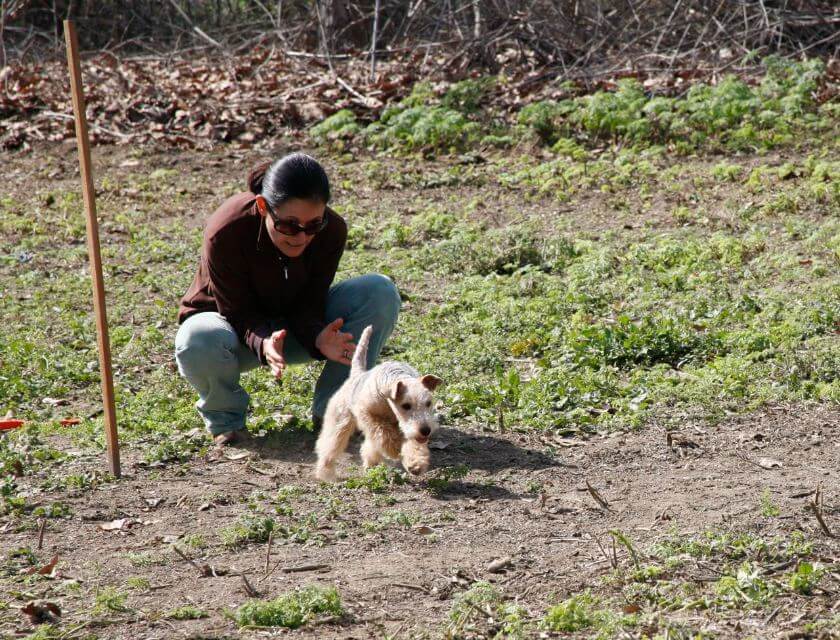
To achieve flexibility the neck needed to be fairly long, and the shoulders not bulky. The shoulder assembly needed to be strong and sinewy, for at times it might be possible to draw the quarry from the earth to be then dispatched by the hunters. The ribs needed to be well-sprung for heart and lung room, but decidedly more oval than round, once again to get the biggest possible dog in the small, narrow dens. Herein lies the key to breed type: the biggest, strongest, most flexible dog still small enough to seek the fox in his den. A weather-resisting coat was absolutely necessary due to the long day and long distance covered by the hunts. A 15-17 pound terrier doesn’t have a lot of body mass. Cold rain will lead to hypothermia if the rain penetrates the coat. For this reason, Lakelands have considerably more undercoat than many of the other terriers.
The undercoat acts as a thermal blanket so the dog’s body heat can be maintained in a layer around the dog, provided there is a tight wiry jacket which allows the rain to run off. Tenacity is another character trait absolutely essential in a working terrier. It might take hours to dig down to a terrier that has cornered a varmint. In the case of the Fells, the rock might prevent digging and the dog was on his own. The following is quoted from The Lakeland Terrier by Sean Frain: “It was during the 1930s …in rather dramatic circumstances. Tommy Robinsons was hunting his pack of Lunesdale Foxhounds in the Bishopdale area and they ran a fox to ground at a bad spot, a large rock earth that was rather a stronghold for foxes. Breay entered two of his bitches into the earth and, after killing their fox, they became trapped to ground. Digging commenced and, after a long grueling session on the exposed fells, one of the bitches, Barker, was reached and got out safely, but it looked bad for the other terrier, so bad, in fact, that after a few days, Cyril had given up any hope of reaching her. It was then that Walter Parkin turned up at the scene and told Breay that he knew a chap who might be able to help.
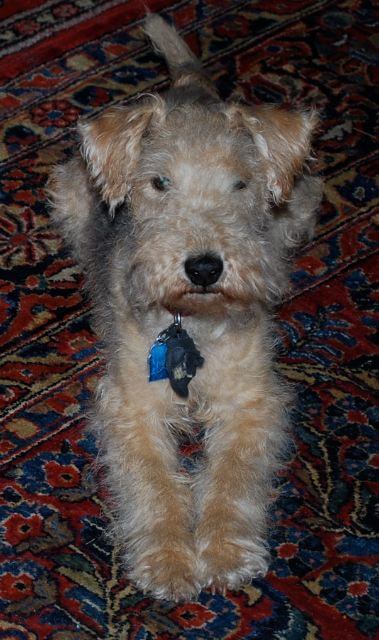
Cyril agreed that this chap could come and see what he could do, but still had no hope of seeing his game bitch again. The weather had turned very nasty by this time and snow blizzards plagued the diggers, chilling them to the bone and dampening morale until gloom and pessimism reigned. Things looked bleak indeed. “The outgoing and cheerful Frank Buck soon turned up, along with a few quarrymen, lightening the tense atmosphere and creating a more optimistic one, with Buck immediately commencing operations, setting explosives in certain places and blasting the hard rock until, finally, and after several days, the terrier bitch was freed from what was about to become her grave. She had endured unbelievably freezing and difficult conditions, but was nevertheless in relatively good shape. Buck was impressed, this was known as a bad earth and the bitch had worked wonderfully well and had survived conditions that would see off less hardy earthdogs. Breay offered Frank money for his efforts, but he refused, asking for a puppy out of the bitch instead.”
If Lakelands were humans, they would be into sky diving, mountain climbing, car racing—the typical pursuits of adrenaline junkies. Their nervous systems are hair trigger, their flight-or-fight response lightning fast. They have a combination of finely honed survival skills, and the ability and willingness to disregard danger. What does all this history mean to the modern Lakeland fancier? The early fanciers organized The Lakeland Terrier Association in England in 1921. The first Lakeland Terrier exhibited was at an agricultural show in 1928. Of note is that dogs were offered through the LTA a challenge cup for any dog earning a working certificate with one of the fell packs. This indicates that work was of paramount importance to breeders. It is very helpful in a breed to examine the evolution of the Breed Standards. While size has not changed appreciably over the years (thankfully), the early breeders made clear their intention of keeping the dogs of a size to do the work they were developed for. Height was not to exceed 15 inches, and dogs were to weigh 17 pounds or less, bitches 16 pounds or less.
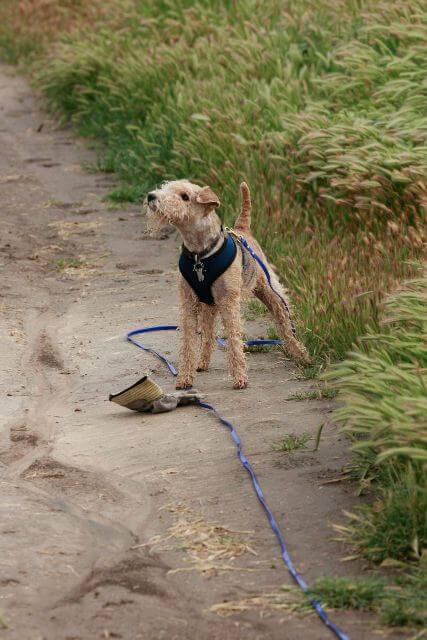
The Lakeland was recognized by AKC in 1934. While the numbers have remained small, the quality is remarkable. And the personality that is typical of this breed that underwent such selective forces is intriguing, exasperating, admirable, puzzling and frustrating all in turn. Noted terrier trainer Pat Muller says, “The best things about a breed are also the worst things.” So very true of Lakelands. They are wicked smart, but may use their intelligence for nefarious purposes, especially when bored or frustrated. A large dose of obsessive-compulsive genes are invariably present (for the ability to continue a behavior for hours if necessary, a requirement for earthwork). Absent a job to do, Lakelands may amuse themselves with compulsive behaviors that are self-rewarding. Such behaviors are similar in origin to head-banging toddlers in cribs—they figure out that the repetitive behavior releases endorphins (feel-good brain chemicals). Favorite games might be stainless-steel pan hockey (skittering the pan along concrete especially—the sound can be heard for half a mile) or pulling vines off of fences, or licking fence posts or toys, or biting the spray from the garden hose. One of the most endearing traits of the breed is their optimism; they think the world is wonderful and every day brings new thrills.
This trait makes them wonderful hunting dogs and Agility competitors and show dogs. But the flip side of the coin is that, for example, turning over the trash can is instantly rewarding (all those smells and textures!) so that any expressed disapproval on your part just can’t trump the adrenaline rush from the naughty behavior. The pup with the potential to grow up to be a top Agility contender or top ranked showdog is the same pup that in the wrong hands might end up surrendered to a shelter for behavioral problems. Actually, there was a BIS winning top ranked Lakeland back in the 80s that had not once but twice been given to a shelter before she was adopted by a show fancier!